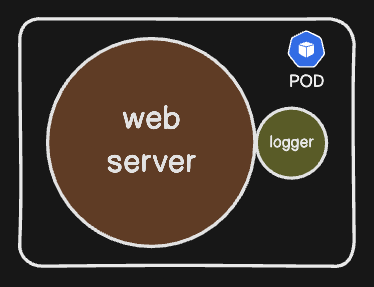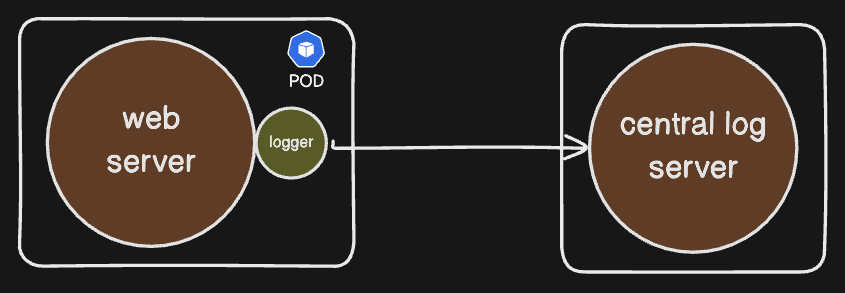kubernetes multi-container pods
multi-container pods and their design pattern use-cases
multi-container pods and their design pattern use-cases
there might be certain scenarios where we might need to use multiple services together, but also don’t want to combine them making a bloated service altogether.
one of the example of such services that might need this type of design pattern can be:

in this case, we will need to scale our logging service based on the traffic in a web server. we can create two containers in a single pod and share the life-cycle and resources such as memory, storage and network space.
creating a multi-container pod is easy as adding the amount of containers in the container array. a simple multi container pod can be something like:
apiVersion: v1
kind: Pod
metadata:
name: app-server
spec:
containers:
- image: ananta/my-packaged-image
name: my-app-service
- image: ananta/my-logging-agent
name: my-logging-agent-servicein this example, we created a simple pod app-server using two container images for a backend service my-app-service and a logging agent my-logging-agent
even though creation of multi-container pod is the same, there are various design patterns that we can follow to design a multi-container pod architecture.

coming back from the previous example, suppose we have a web server and a log agent. The log agent sends log data to another third-party entity/service. This scenario can be called a sidecar pattern because the log agent acts as a child process for the web server to send log data.
in the adapter pattern, if another process acts as a service to the main process, functioning like an adapter, it is said to be in the adapter pattern. In our example, if the log agent updates data or structure for the central server to process, this is known as the adapter pattern.
in the ambassador pattern, if another process acts as a service to the main process, functioning like a proxy for the main service, it is in the ambassador pattern. In our example, if the log agent service keeps track of the database environment (production, sandbox, development) and the main service depends on this service, it is said to be in the ambassador pattern.